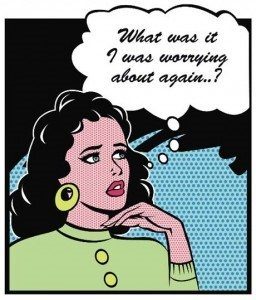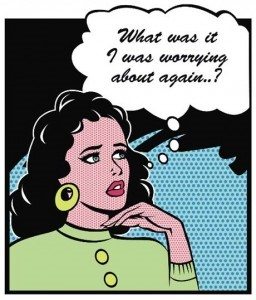
“Should I worry my son can’t say things like other children?” a mother asked me.
Pretty much all I heard was “Should I worry?”
I knew what she meant, but her question was “SHOULD I WORRY?”
We think worry is passive, but the truth is worry is like a brush fire with one thought igniting another until it becomes a forest fire out of control.
Worry is a really bad use of your imagination.
“Worry” is never something you should do, but taking action and asking questions is a good idea.
So often we are quick to use language that actually creates our experience instead of describing it.
When we preface our comments with the default phrase “I’m worried” and you stack it up multiple times a day you geometrically amplify worry to the queen bee mother of all worry—
A N X I E T Y
Worry is an action that’s physically damaging. Ironically for all its flame and fire, worry is also like an internal leak oxidizing our brains and damaging our organs with a slow drip of cortisol.
Is there an upside to worry?
Yes.
Worry should be considered a warning light. It’s a call to investigate what’s behind, beneath or beyond the feeling. Worry is a first signal—a useful tool to trigger action.
Getting anxious can motivate us to take a positive action, or help us to plan for a worst-case scenario.
“I’m worried I’ll lose my job.” Signals you to take inventory of what you’re doing, what skills you have and if you’ll need to investigate other possibilities.
“I’m worried my child is hanging with the wrong crowd.” Signals you to establish boundaries, seek professional guidance, and manage your own mental health.
“I’m worried the medical report will be bad?” signals you to ask questions, learn about your body and how you can improve your health and manage what is coming.
“I’m worried about our political future.” Signals you to take action and become involved in amending policies.
Futurizing catastrophe as a state of being is most often an action perpetuated by repeating catastrophic thoughts aloud to yourself and to anyone who will hear them.
If you are not futurizing a solution and only the catastrophe, your worry trigger is stuck.
How do you get the trigger unstuck?
Uncertainty is a fact of life. Chronic worriers are constantly asking, “What if something horrible happens? The other side of that stick is “What if something good happens?”
If you’re going to think horrible thoughts balance them with the opposite.
Action 1: ASK what positive actions can I take to minimize this, avert this or turn it around? It might simply be meditating to get a clearer mind or taking a nap to hit your reset button.
Action 2: Look at your problem through a different frame of time.
How will you feel about this 10 years from now? 10 months from now? 10 weeks from now? 10 days from now? 10 hours from now? 10 minutes from now? 10 seconds from now?
Getting a perspective of time is like pushing pause, not allowing the negative thoughts to spiral out of control. If you will laugh about this 10 years from now or 10 hours from now, see what happens if you laugh about it now.
Action 3: Practice this Neurolinguistic Technique using a time line.

- Ask yourself what you are specifically anxious about
- Close your eyes & Float above your time line
- Float out above your future to 15 minutes after the successful completion of the event about which you thought you were anxious.
- Turn and look toward NOW, along the TIME LINE
- Now see where the anxiety is. If it’s gone COME BACK TO NOW
- If the anxiety is not gone, go back to step #3 and imagine completing the event
Action 4: Try some turn around phrases after stating what’s true: Even though I feel anxious and worried,
- “I am open to seeing this differently.”
- “I choose to believe I can change my thoughts.”
- “I am open to feeling more relaxed.”
- “I am open to gaining understanding and compassion.”
- “I am becoming a more relaxed and joyful person.”
Action 5: Plan a time to “worry.”
A study in the Netherlands found that if you schedule in a specific time to worry it actually reduces the amount of worry. Confining it to a time frame gives your brain a signal that worry has a beginning and end. In this calm knowing, a specific time awaits you, your brain often gets to work on calmly solving the problem before you even get to your designated time.
Should you worry about how much you worry?
Of course not! But if your worry is excessive, debilitating and the above suggestions don’t help, seek professional help. You deserve a life that is joyful and empowered.
Make Believe~Make Belief Affirmation: I turn my worry into positive action.






